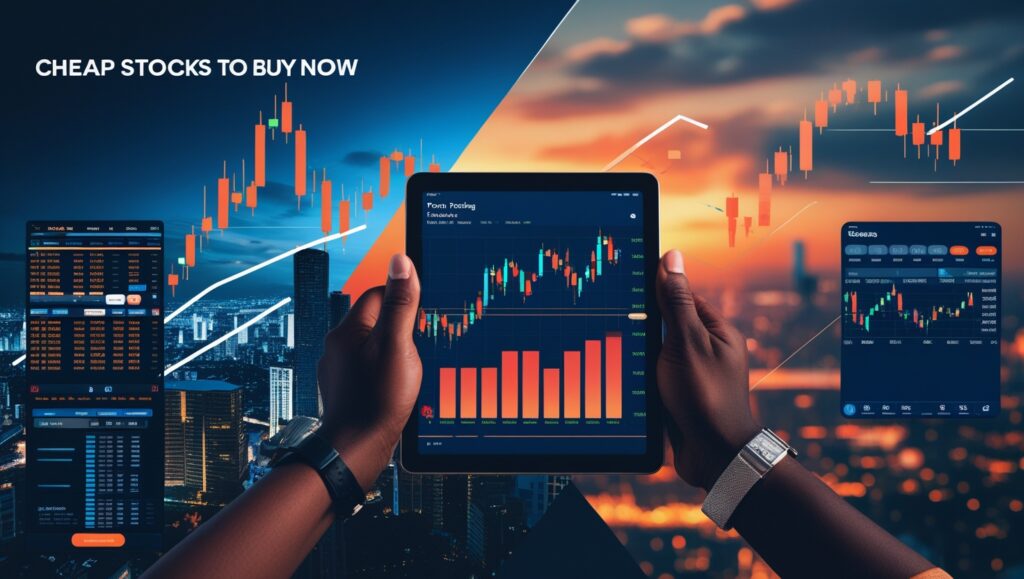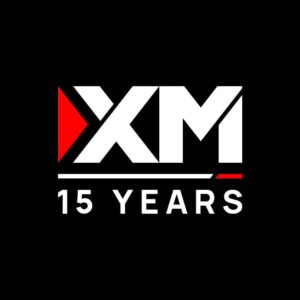
In the pursuit of high returns, many investors scour the markets for cheap stocks to buy now – from penny stocks trading under $1 per share to emerging AI stocks – while others venture into the fast-paced world of foreign exchange (forex) trading. Both approaches offer the allure of outsized gains but come with significant risks. It is crucial to understand how ultra-low-priced stocks and currency trading compare in terms of volatility, potential reward, and accessibility before diving in. This article provides a balanced comparison of cheap U.S. stocks (including current September 2025 examples under $1) versus forex trading, examining their respective risks and rewards.
Overview: Cheap Stocks to Buy Now vs Forex
| Investment Type | Risk Level | Potential Returns | Key Characteristics | Best For | Major Warnings |
|---|---|---|---|---|---|
| STOCK INVESTMENTS | |||||
| Penny Stocks Under $1 Examples: BTOG ($0.33), CAN ($0.68) |
Extreme Risk | Very High Can double/triple overnight |
• Ultra-volatile (5¢ move = 10% change) • Limited transparency • OTC market trading • Company-specific risks |
Experienced speculators with high risk tolerance | 99.9% eventually worth less Total loss possible |
| Cheap AI Stocks Examples: BBAI, APLD, SOUN |
Extreme Risk | Very High Multi-bagger potential |
• High-tech exposure • Sentiment-driven volatility • Often unprofitable • News-sensitive pricing |
Tech-savvy investors seeking AI exposure | Nascent companies Boom-bust cycles common |
| FOREX TRADING | |||||
| Currency Trading Major pairs: EUR/USD, USD/JPY |
Extreme Risk | Moderate-High Leverage amplifies gains/losses |
• 24/5 market access • High liquidity • Leverage-based trading • Macro-driven volatility |
Experienced traders with technical skills | Leverage can wipe accounts Complex market dynamics |
| KEY INSIGHTS & COMPARISONS | |||||
| Accessibility | Varies | N/A | Stocks: Limited hours (9:30am-4pm ET) Forex: 24/5 trading |
Different schedule preferences | Both require broker access |
| Volatility Source | High Both | N/A | Stocks: Company events, thin trading Forex: Economic news, leverage |
Different risk triggers | Both can move dramatically fast |
| Beginner Suitability | Not Recommended | N/A | Both require advanced knowledge and strict risk management | Start with blue-chip stocks/index funds | High failure rate for novices |
Cheap Stocks to Buy Now Under $1 (September 2025 Examples)
Cheap stocks under $1 – often called penny stocks – attract investors with their low price and the dream of big upside. By definition, a penny stock is a small-company stock typically trading for under $5 per share (with many micro-cap shares well below $1). These ultra-cheap stocks allow one to buy a large number of shares with modest capital, but they are extremely speculative. In fact, regulators require brokers to warn clients about penny stock risks, as the odds of losing your entire investment in a penny stock are far greater than the odds of hitting a home run. They are often “cheap for a reason,” reflecting weak fundamentals or distressed business conditions. Many trade on OTC (over-the-counter) markets rather than major exchanges, meaning limited reporting and transparency compared to blue-chip stocks.
Examples: As of September 2025, numerous U.S. stocks trade under $1. For instance, Bit Origin Ltd. (NASDAQ: BTOG) was recently around $0.33 per share, and Canaan Inc. (NYSE: CAN) – a blockchain hardware company – traded near $0.68. Even some once-notable companies have fallen into penny-stock territory; for example, Tilray Brands (NASDAQ: TLRY), a cannabis sector stock, hovered close to $1 in early September 2025. Such low prices can lure bargain hunters, since a small price uptick of just a few cents translates to a big percentage gain. However, these stocks are exceedingly volatile. Low liquidity and any surge of speculative interest can send prices skyrocketing or plummeting in short order. As one industry veteran warns, “99.9% of these cheap stocks will eventually be worth less than they are right now”. In other words, only a tiny fraction of sub-$1 companies ever graduate to sustained success – most eventually stagnate or fail. Investors in this arena must be prepared for the very real possibility of total loss.
Despite the risks, penny stocks can occasionally deliver explosive rewards. A clinical trial success or breakout earnings report can cause a penny stock to double or triple overnight, rewarding those who got in early. The appeal of turning a few hundred dollars into thousands is what keeps speculators interested. But for every fairy-tale surge, there are countless micro-cap stocks that wither away. As legendary investor William O’Neil cautioned, “what seems low and cheap generally goes lower”. In sum, cheap stocks to buy now under $1 dollar offer the possibility of sharp gains but come with extreme risk. Thorough due diligence, skepticism toward hype, and strict risk management are essential when dabbling in these low-priced equities.
Cheap AI Stocks to Buy Now (Emerging Tech Opportunities)
Not all “cheap stocks” are in obscure industries – some are tied to buzzy sectors like artificial intelligence. The AI boom in 2025 has powered some of the market’s fastest moves, and even small-cap AI-focused companies have drawn significant attention. Cheap AI stocks (often trading in the low single digits) give investors a way to speculate on the cutting-edge of tech without paying the rich valuations of giants like Nvidia. For example, BigBear.ai Holdings (NYSE: BBAI) – a U.S. defense and analytics firm often compared to a “low-priced Palantir” – traded only a few dollars per share and saw its stock rally about 60% in 2025 amid new government AI contracts. Another name is Applied Digital Corporation (NASDAQ: APLD), an AI data center operator whose stock spiked in mid-2025 after it landed a $10+ billion cloud partnership. Even SoundHound AI, Inc. (NASDAQ: SOUN), which began the year as a sub-$5 “penny” stock, became one of the most explosive AI names as its voice-recognition technology gained commercial traction. These examples show how quickly a small AI player’s share price can surge with the right catalyst.

Investing in cheap AI stocks marries high tech potential with high risk. On one hand, early investors in the “next big AI innovator” could see multi-bagger returns if the company’s product takes off. On the other hand, many of these companies are unprofitable and in nascent stages of development. They tend to be highly volatile and extremely sensitive to market sentiment. As one analysis notes, smaller AI stocks “present a chance to take advantage of the hottest sector right now. However, the inherent volatility and the nascent stage of these companies necessitate thorough analysis”. In practice, that means prices of AI penny stocks can swing wildly with each new AI trend or news item. A positive headline (e.g. a contract win or breakthrough) might ignite a buying frenzy, while any disappointment can trigger a steep selloff. Investors interested in cheap AI stocks should have a strong understanding of the technology and competitive landscape. Just like other penny stocks, cheap AI stocks to buy now should be approached with caution: diversify positions, verify news from credible sources, and be prepared for rapid changes in fortune. When chosen carefully, a few well-placed bets on innovative AI upstarts might pay off handsomely – but one should never ignore the sizable risks in this high-reward corner of the market.
Forex Trading vs. Stock Investing: Risk and Reward Comparison
Forex trading – the buying and selling of global currencies – is often viewed as an alternative path to high returns, parallel to stock investing. Both forex and penny stocks are speculative arenas, meaning they offer higher risks and higher rewards than many other assets. However, the nature of their volatility, risk factors, and market mechanics differ in important ways. Below we compare key risk/reward factors between cheap stocks (especially penny stocks) and forex:
| Factor | Cheap Stocks (Penny Stocks) | Forex Trading |
| Risk | Extremely high risk. Company-specific issues (poor financials, bankruptcy, fraud) can make shares worthless. No built-in leverage in stock ownership means losses are generally limited to your invested capital. Most penny stocks fail over time, so the risk of a 100% loss is significant. | Extremely high risk. Currency prices are influenced by macroeconomic events and can move quickly. Trades are typically done on margin (leverage), so even small exchange rate fluctuations can wipe out an account. Without careful risk controls, a forex trader can face steep losses very fast. Proper position sizing and stop-loss orders are critical. |
| Reward Potential | High upside potential in percentage terms. A successful penny stock might double or triple in value on positive news, yielding substantial gains. In rare cases, a tiny stock that turns its business around can become a multi-bagger. However, such big wins are uncommon, and the median outcome for cheap stocks is poor (many languish or get delisted). | Moderate to high upside, but usually more incremental. Major currency pairs (EUR/USD, USD/JPY, etc.) typically move by fractions of a percent per day. Traders often rely on leverage to amplify small price moves into sizable gains. Skilled forex traders target consistent, compounded returns rather than one-off “home runs.” While outsized profits are possible (especially on volatile exotic currencies or during news events), the risk of large losses rises proportionally with reward. |
| Volatility | Very volatile. Low-priced stocks often see sharp price swings – a 5¢ move on a $0.50 stock is a 10% change. Thin trading volumes and speculative frenzies can produce big spikes and crashes intraday. Penny stock volatility is often event-driven (e.g. a clinical trial result) and can exceed that of most blue-chip stocks. Investors may experience long stretches of stagnation punctuated by sudden jumps or drops. | Highly volatile as well, especially during economic news releases. The forex market’s deep liquidity usually prevents erratic jumps in major currency pairs under normal conditions. But currencies can still swing dramatically with global news (e.g. a central bank decision or geopolitical crisis). Notably, leverage makes forex positions effectively more volatile from the trader’s perspective – a 1% currency move is a 20% gain/loss if 20:1 leverage is used. During rare events (e.g. Brexit 2016, when GBP/USD fell ~10% in a day), volatility is extreme. |
| Accessibility | Stock market accessibility is high for U.S. investors – online brokers and apps offer easy access to even penny stocks. However, many sub-$1 stocks trade on OTC platforms or minor exchanges, which might require specific broker access and carry high transaction spreads. U.S. stock trading hours are limited (generally 9:30am–4pm ET on weekdays), so one can only trade during those sessions (with limited after-hours liquidity). | Forex is a 24-hour market (24/5), so traders can buy or sell currencies at virtually any time of day. This around-the-clock access offers flexibility – one can trade currencies in the U.S. evening or early morning when stock markets are closed. Opening a forex trading account is relatively easy and typically requires a small minimum deposit. That said, the market complexity is high – understanding global economics, interest rates, and technical FX strategy is necessary. The ease of entry belies the steep learning curve and discipline needed to trade forex successfully. |
Risk vs Reward: Both penny stock investing and forex trading demand a tolerance for volatility and a proactive approach to risk management. Neither is an appropriate “safe” choice for a conservative investor or those unwilling to lose money. In fact, forex trading is often deemed unsuitable for novices due to its technical complexity and elevated risk of significant short-term losses. Stock investing, by contrast, can be scaled to one’s risk appetite (e.g. sticking to well-established companies or index funds). But when focusing specifically on cheap, speculative stocks, the risk profile starts to resemble that of forex – highly unpredictable and not for the faint of heart.
One key difference is psychological: buying a stock (even a penny stock) is intuitively akin to investing in a company, whereas trading forex is purely a bet on relative currency values. Both require rigorous strategy. The best practitioners in each realm emphasize discipline and risk control over chasing quick profits. As the famous trader Bruce Kovner observed, many novices trade far too large – taking 5–10% risks per trade when they should be risking 1–2%. Whether it is cheap stocks or currency pairs, surviving and thriving in these markets means keeping one’s bets small relative to capital, cutting losses quickly, and staying educated.
Conclusion: Balancing Opportunities and Caution
Cheap stocks and forex trading each offer a high-risk, high-reward path that can be appealing to ambitious investors – but success requires knowledge, strategy, and a sober assessment of one’s risk tolerance. U.S. penny stocks under $1 present opportunities to get in on the ground floor of companies with big potential (or to speculate on trending sectors like AI at low entry prices). However, they also carry a high likelihood of failure and near-total loss, as underscored by expert warnings and historical outcomes. Forex, on the other hand, provides unparalleled liquidity and 24/5 access to global markets, with profit opportunities arising from macroeconomic trends and short-term price oscillations. Yet the built-in leverage and rapid pace of currency trading mean mistakes can be financially devastating if not managed.
For experienced investors with strong risk management practices, both cheap stocks and forex can play a role in an aggressive growth strategy. A few small allocations to promising penny stocks or strategic currency positions might yield outsized returns as part of a broader, diversified portfolio. On the whole, though, these are not “get rich quick” shortcuts. They are highly competitive arenas where it takes skill, research, and sometimes a bit of luck to come out ahead. As a final thought, it pays to remember that capital preservation is just as important as growth. Legendary investors often stress avoiding major losses as rule number one. Whether you are sifting through the cheap stocks to buy now or analyzing forex charts late at night, keep emotions in check and base decisions on facts and sound strategy. By understanding the unique risks and rewards of each, investors can make informed choices – or decide to steer clear – in line with their financial goals and experience level. In the end, the wisest approach may be a balanced one: seize opportunities selectively, but always with an eye on the risks that come hand-in-hand with the potential rewards.
FAQ
What are penny stocks under $1?
“Penny stocks” generally refer to very low-priced shares of small companies. In the U.S., any stock trading below $5 is often considered a penny stock, and those under $1 are ultra-penny stocks. These stocks typically have tiny market capitalizations and may trade on smaller exchanges or OTC markets. They are highly speculative and prone to large price swings due to low liquidity. Investors should note that such stocks are cheap in price because the companies often have poor financial health or limited operational history.
Are cheap AI stocks a good investment?
Cheap AI stocks can offer exposure to the booming AI sector at a low share price, but they are not automatically good investments. Many AI-focused penny stocks are young companies with unproven business models. While a few might skyrocket if their technology succeeds, most face intense competition and burn cash. These stocks are volatile and can rise or fall sharply on news. Investors considering cheap AI stocks should do thorough research on the company’s product, market opportunity, and financials.
Which is riskier, forex trading or penny stocks?
Both forex trading and penny stock investing carry extremely high risk, but the nature of the risk differs. Forex trading involves leverage – you might control a large currency position with a small amount of money – so even minor fluctuations can result in big losses. Penny stocks carry the risk of company-specific failure and very high volatility. In practice, forex can be riskier for an inexperienced trader due to leverage, whereas penny stocks can be equally risky for those drawn in by hype.
How can I manage risk when trading cheap stocks or forex?
Managing risk is crucial. Never invest more than you can afford to lose. For penny stocks, diversify across several picks and set stop-loss

















